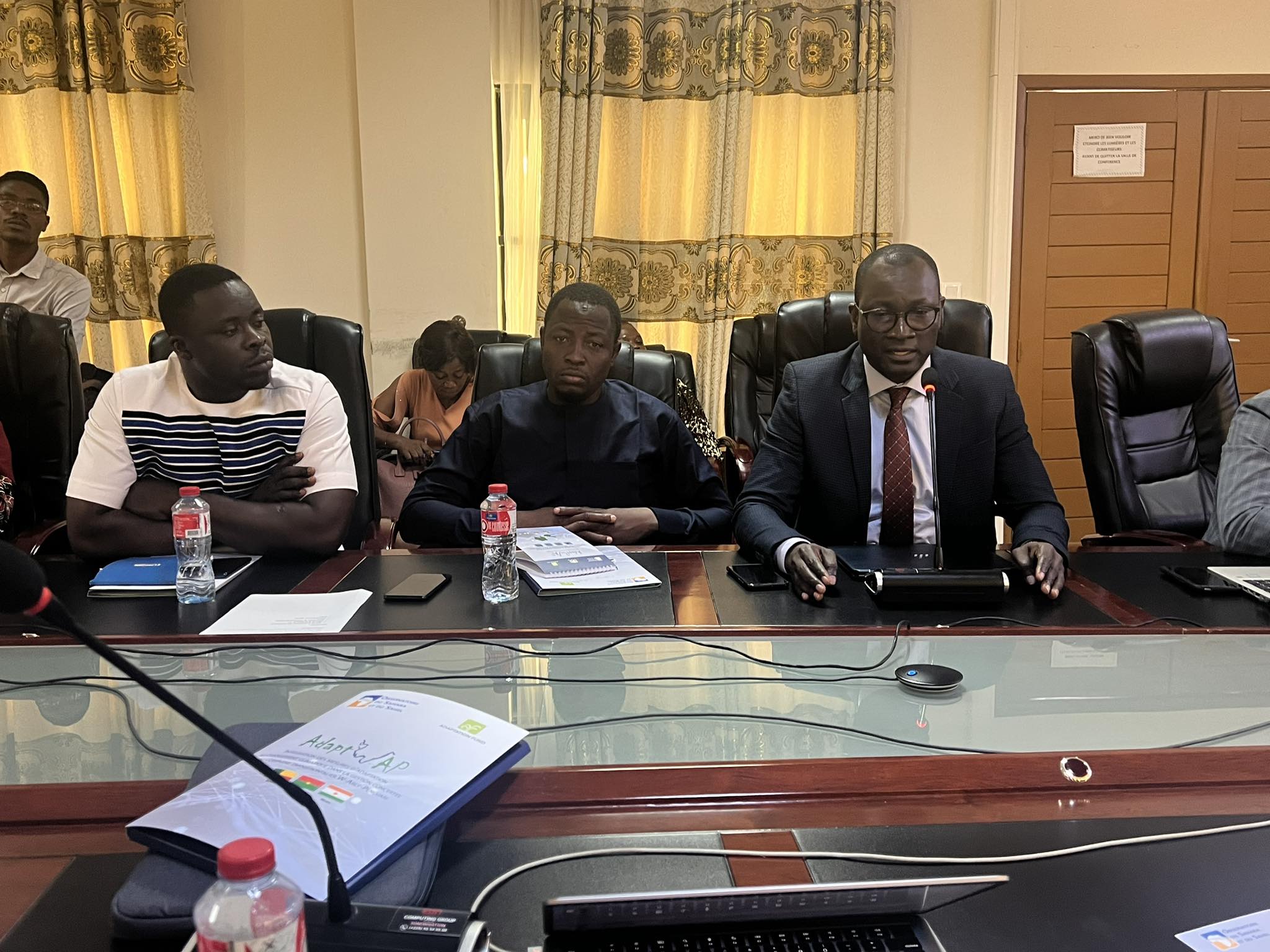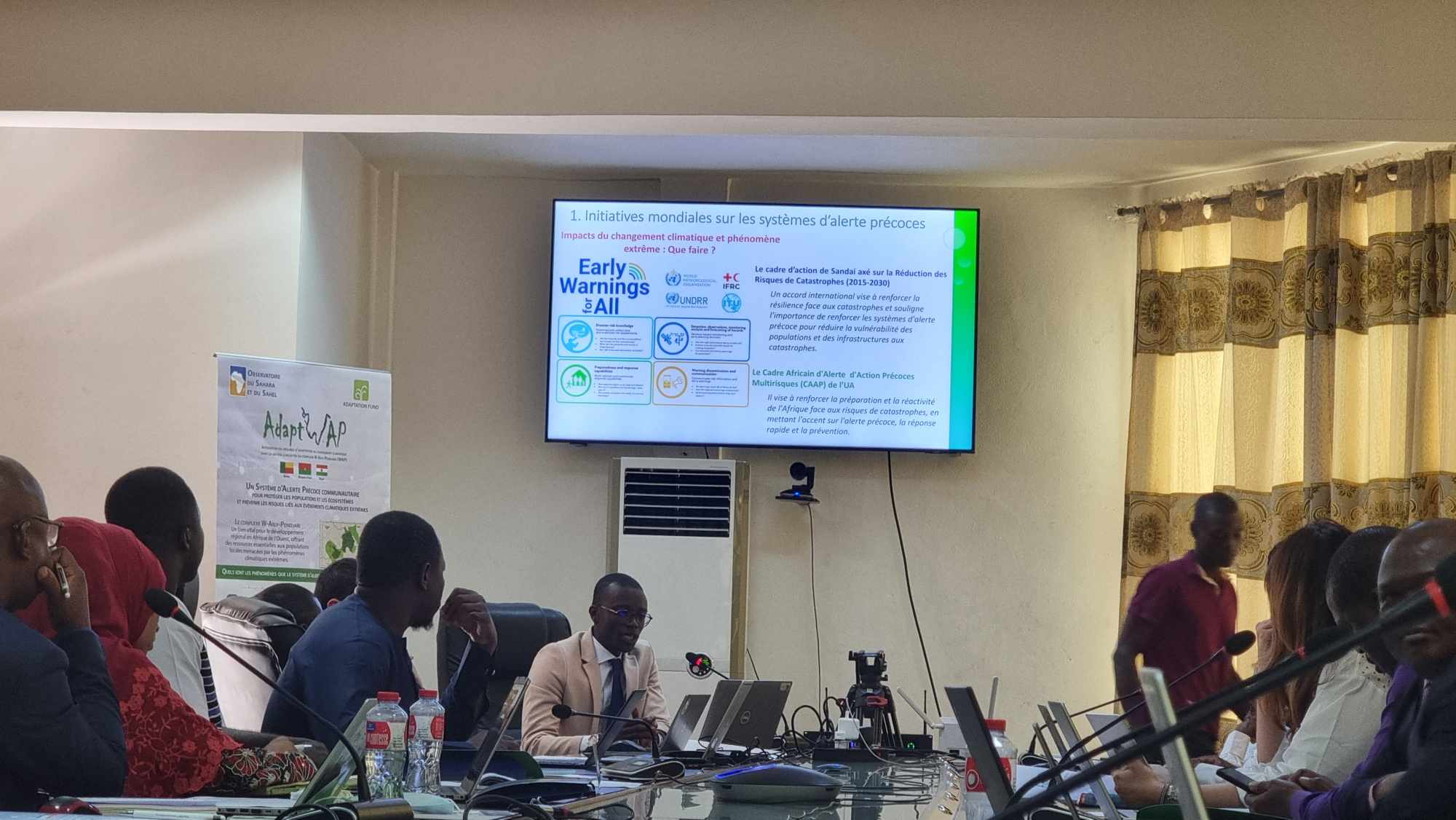

The official ceremony for the launch of the Multi-Risk Early Warning System (MR-EWS) of the W-Arly-Pendjari complex took place on May 7, 2024 with the presence of Mr. Nabil Ben Khatra, Executive Secretary of the Sahara and Sahel Observatory, Mr. Séverin K. Nsia, Technical Advisor for reforms of the Ministry of Living Environment and Transport of Benin, in charge of Sustainable Development, representing His Excellency Mr. José Didier Tonato, Mr. Didier Kapka, Director General of the National Meteorology Agency of Benin (METEO-BENIN) and Mr. Dadja Nicolas Gnakpaou, Executive Director of the Mono Basin Authority. This landmark event held in the premises of the National Meteorology Agency of Benin (METEO-BENIN) is a crucial step in the management of climate risks at the regional level.
The event was attended by representatives of national entities and stakeholders from the three countries sharing the WAP Complex, namely the General Directorate of the National Center for Wildlife Reserve Management – CENAGREF, the Director General of the National Office of Protected Areas of Burkina Faso - OFINAP, the Director General of Water and Forests of Burkina Faso, the national coordinators of the AdaptWAP project in Benin, Burkina Faso and Niger, the representative of the AGRHYMET/CILSS Regional Center, the Executive Director of the West African Savannah Foundation FSOA, and representatives of community organizations (AVIGREF - Pendjari), the civil society and the media. The regional Execution Units (PMUs) and Implementation Units (IUs) of the project, represented by Mr. Abdoulkarim Bello, AdaptWAP project Coordinator at the regional level, and Mrs. Khaoula Jaoui, OSS Climate Department Director, also took part in the event.
The launch of the MR-EWS of the WAP complex was officially announced by Mr. Séverin K. Nsia, who expressed his satisfaction with the deep collaboration that made it possible for the system to come to fruition. He underlined the crucial importance of this system to protect the populations and ecosystems from extreme climate events and their impacts. He also stated that this initiative was highly important for the WAP Complex and the region that is vital on a socio-economic and ecological level. He recalled the benefits of the WAP MR-EWS in the anticipation and management of extreme climate risks, including drought, floods and wildfires, as well as the risks of human-wildlife conflicts in the Complex region.
In his speech, the OSS Executive Secretary, declared that the launch of the MR-EWS marks a fundamental progress in the life of the AdaptWAP project, thanks to an inclusive approach that involved all national structures specialized in disaster management in the region, while reaffirming the Organization's commitment to lending a hand to all partners, to successfully operationalize the system for the well-being of the WAP populations. He also recalled that the system was developed by the group of design offices and the Regional Analysis and Social Expertise Laboratory and shall be accessible and beneficial for local communities.
Mr. Didier Kapka, Director General of METEO-BENIN, underlined the capital importance of this initiative for the region, especially in a climate change context. He also highlighted the importance of partnerships and networking, noting that the WAP MR-EWS is a major achievement which required the commitment of all national entities, and that it would be profitable to have it reproduced in other regional parks in Africa.
This meeting aimed at informing decision-makers and system users of the start-up of the Multi-Risk Early Warning System (MR-EWS) for the benefit of the W-Arly-Pendjari complex communities, made it possible to make a practical demonstration of the platform. In this regard, the representative of the (BRl Ingénierie) Design Office presented concrete details, in particular, the data used to feed the prototype, thus ensuring optimal accuracy. It is worth mentioning that the current prototype is designed in such a way that it allows the integration of new data sources to closely follow the evolution of the data monitoring network.
The successful adoption of this tool by the final beneficiaries will require significant awareness-raising and dissemination efforts. Only a thorough understanding of its capabilities and advantages will allow effective ownership of this innovative tool.
Finally, the participants expressed their commitment to keep working with determination, placing emphasis on constant improvement and adaptation to the changing needs.
At the end of the meeting, the stakeholders made a tour in the METEO BENIN premises, including the server room housing the new SAP server, recently acquired as part of the AdaptWAP project.